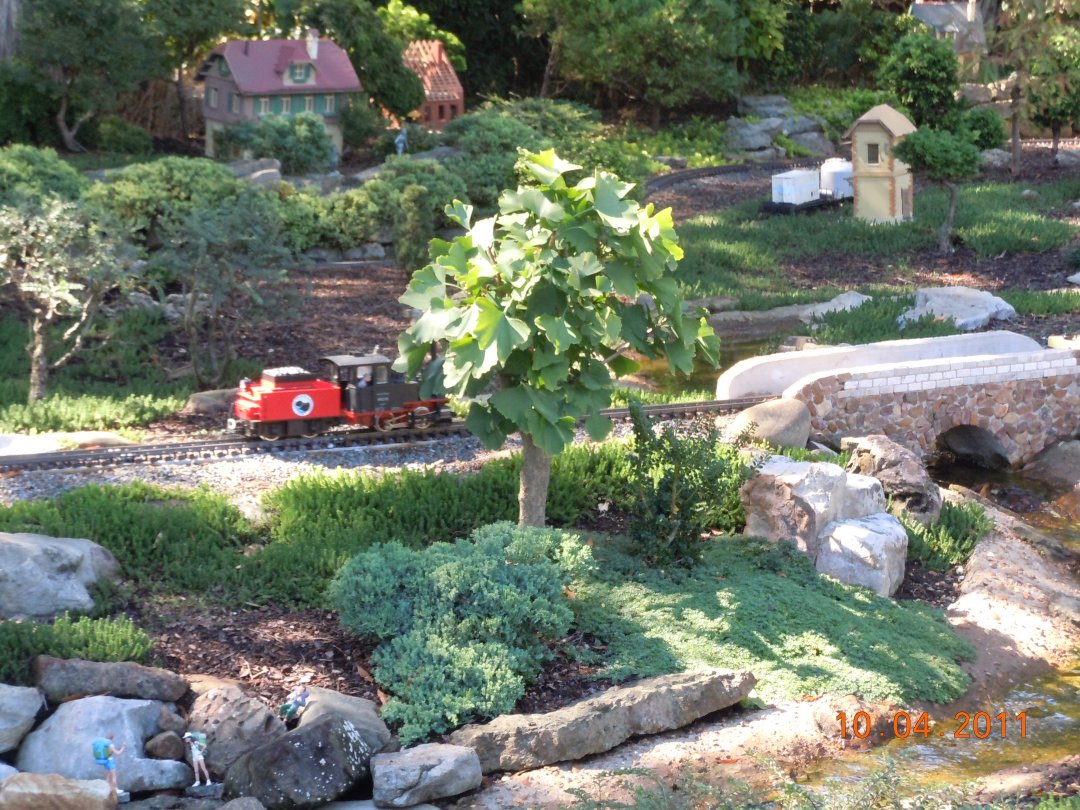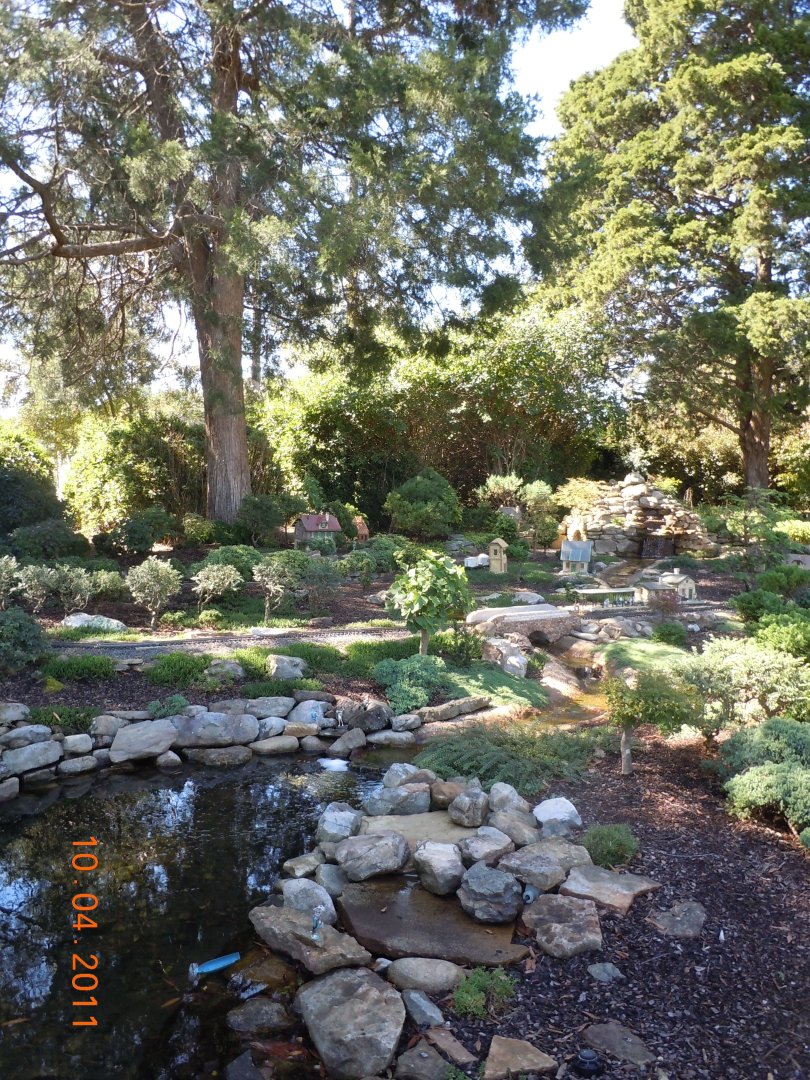Siting A Garden Railroad
This page is about siting (not sitting) a garden railroad in your yard. : ) So, we decided to do a "Garden Railroad" but hardly even knew what one was.
After some quick internet searching for what it was all about, we soon learned about G Gauge and got some general information about buying a train set.
The setup that inspired us at the Huntsville Botanical Gardens
had a cool waterfall flowing into a small pond. We wanted all that too.
Now that we knew what our target garden railroad would include, we came to the first hurdle of picking a spot for it in our yard. We have a pretty large yard with several possibilities. Here were the considerations we took into account:
a. Proximity to House -- we didn't want to have to be walking a long distance back and forth to the house to get snacks, or beer or whatever we might need from inside the house. Yet, we also didn't want the layout right at our back door where it became an obstacle or where visitors had to avoid it to get to our door. We had spent a lot of time building a shade garden in the backyard and didn't want to detract from it either.
b. Electrical Power -- since our plan included a waterfall we would have to have a pump, and I wanted a lot of flow in it. We would need to be able to plug in the pump to a 110 volt outlet within 20' or so of the pond. The pond pump I was considering had a 20' cord on it so that provided the limit on how far away the electrical outlet could be.
c. Water -- it would be nice to have an outdoor faucet available or at least be within reasonable hose distance. Water would be needed during construction for mixing concrete and washing tools, for filling and maintaining the pond level, and for general washing and maintaining the site.
d. Terrain -- The waterfall could be facilitated by selecting a spot where the terrain already had a downward slope to it. That would reduce the amount of digging we would have to do and we would not have an out-of-place looking mound in the yard.
e. Sunlight Conditions -- My first thought was that to grow bonsai trees and other plants we would need to have direct sunlight. However, having seen the layout at Huntsville Botanical Gardens where they were under large trees providing filtered light, we were more confident that a shaded place would allow a wide variety of plantings. Also, it would allow us to work in the shade and to view the railroad in the shade on hot summer days.
Given these considerations, we narrowed it down to three possibilities:
a. South of the House -- there was a shady area immediately south of our house where we had not gotten around to doing much planting yet. It was very close to the house meeting our first criterion. As to electrical power, there was an outside outlet already installed on the side of the house that was convenient. I had installed it there when I had previously needed power for an electric fence that we put up as an attempt to keep deer from eating all the plants in our backyard (a whole other story that I won't cover here). So, that met criterion number two. We also had a hose bibb not far away so water was available. The terrain had a gentle slope to it but really not enough for a significant fall on a waterfall. The entire spot was shady, perhaps too much so. After thorough discussion and review, we rejected this spot as being a little TOO close to the house. It would end up being in the way of getting around the house and doing other chores.
b. Behind the Barn -- We have a metal "barn" that once served as our living quarters while we were building the house a few years ago. The "barn" is about fifty feet behind and to the south of the house. Most everyone probably has some sort of storage shed in or around their backyard, so that sort of serves the purpose our "barn" now serves as well as having the separate barn apartment available for visitors. Behind there is an area about 40 feet wide and as long as the barn (45 feet) that would be about the right size for a garden railroad. It also has a gentle slope to it and is shady. There is power and water available there too, coming from the barn. However, we finally decided that it was TOO shady and would limit the types of plants we could grow.
c. The third and final candidate was an area on the north side of the house. Ultimately it became our choice because it was near the house but not too close. It had water available although it did not have power. It's biggest selling point was the slope of the terrain -- it had a nice drop of about four feet over only about a 20' slope. We decided we could overcome the lack of power in favor of getting the great waterfall site and the right balance of shade and sunlight. The site has large trees but they are sparse enough to allow some direct sun in part of the area.
So we had finally decided on where the new railroad and village would go. Now the real work had to begin. Continue to Planning page -->

